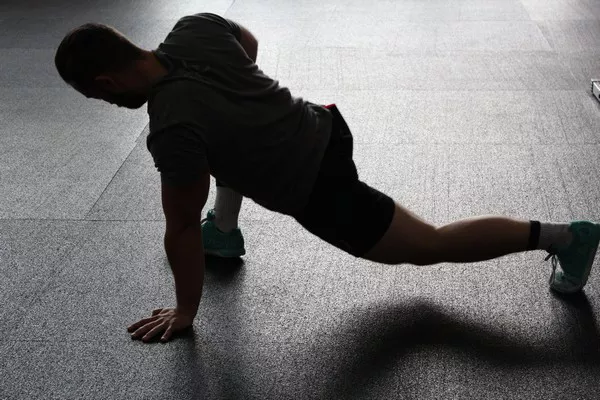Pole fitness isn’t just a glamorous display of strength—it’s a full-body workout that fuses flexibility, power, grace, and fun. Once associated with clubs and entertainment, pole fitness has emerged as a respected sport and a vibrant form of self-expression. Today, people around the world use it to sculpt their bodies, boost confidence, and discover a unique way to move. But can you take the magic of pole fitness out of the studio and into your home? Absolutely—but it requires the right setup, mindset, and safety precautions.
As home fitness continues to evolve, pole workouts have earned a place beside yoga mats and dumbbells. Installing a pole in your bedroom, living room, or spare room offers you the freedom to train on your schedule, refine your skills in private, and enjoy a powerful form of movement that challenges both the body and the mind. Whether you’re a beginner looking to build strength or a seasoned dancer refining choreography, home pole fitness opens new doors.
In this article, we’ll explore what it takes to practice pole fitness at home, from choosing the right equipment to designing a safe training space. We’ll also look at how to structure a pole workout, build your skill set progressively, and overcome common obstacles—all without stepping foot outside your door.
What Is Pole Fitness?
Pole fitness is a form of exercise that combines dance, acrobatics, and strength training using a vertical pole as the main apparatus. Unlike traditional gym routines, pole fitness emphasizes functional movement, where you use your own body weight to climb, spin, invert, and pose. Every move demands coordination, stability, and core control.
It’s not just about looking elegant while spinning. Each session engages your arms, shoulders, back, abs, glutes, and legs. The beauty of pole fitness lies in its diversity—it’s equal parts artistry and athleticism. While some people approach it from a dance background, others are drawn to its strength-building benefits. Whether you’re working on basic pole grips or aerial inversions, the journey is always dynamic.
Pole fitness also encourages body positivity. As you progress, you learn to appreciate your body not just for how it looks, but for what it can do. The sense of empowerment from mastering a spin or finally holding a pose is unlike anything else.
Can You Really Practice Pole Fitness at Home?
Yes, and in fact, many pole athletes now train at home full-time. With the right pole and setup, your home can become a personal studio. Practicing at home allows for uninterrupted training, freedom to learn at your own pace, and the privacy to experiment without the pressure of a class environment.
But it’s not as simple as buying a pole and jumping in. You’ll need to ensure structural safety, choose the right type of pole, create a clutter-free area with adequate height and floor space, and ideally have a few guiding resources—like online tutorials, virtual classes, or instructional books.
Pole fitness at home is not just possible; it’s practical and empowering. As long as you prepare your space correctly and approach training with discipline and respect for your limits, you can achieve impressive results from the comfort of home.
Choosing the Right Pole for Your Home
Before you begin your pole fitness journey at home, you need a quality pole that suits your needs and space. There are two main types of poles: static and spinning. Many home poles can switch between both modes.
When selecting a pole, consider the following:
Material: Chrome is common and beginner-friendly, while stainless steel and brass are better for grip and different climates.
Diameter: Most poles are 40mm, 45mm, or 50mm in diameter. Beginners often start with 45mm.
Mounting type: Tension-mounted poles are popular for home use because they don’t require drilling. However, for long-term safety, make sure your ceiling and floor can handle the tension.
Most reputable brands (like X-Pole or Lupit Pole) provide instructions for installation. Make sure to follow them carefully and test the pole before using it at full strength. The pole should be stable, secure, and centered in your workout space.
Creating a Safe Space for Training
Safety is essential when practicing pole fitness at home. Ideally, your ceiling should be at least 7.5 to 9 feet high, and you’ll need at least 6 feet of clearance in every direction to allow for spins and floorwork.
Here’s how to set up a safe environment:
- Clear away furniture, sharp edges, or objects you could fall onto.
- Use a crash mat during tricks, especially when learning inversions or aerial holds.
- Avoid hard or slippery floors—non-slip mats or rubber flooring can improve grip.
- Install mirrors if possible to help with form correction and visual feedback.
- Ensure proper lighting so you can see your form clearly.
Wearing proper attire also helps. Skin contact with the pole is crucial for grip, so tank tops and shorts are preferred. Keep your skin dry and avoid using lotions before your workout.
Structuring a Home Pole Fitness Routine
Pole fitness isn’t just about climbing up and down a pole—it’s a full workout. To avoid injury and build strength safely, structure your practice like any other fitness session:
Warm-Up (10–15 minutes):Start with dynamic stretches and mobility exercises. Focus on shoulders, hips, wrists, and back. A warm-up increases circulation and prevents strain.
Conditioning (10–20 minutes):Incorporate bodyweight exercises like planks, push-ups, leg raises, and pole-specific drills. These build foundational strength and prepare your muscles for pole moves.
Skill Training (20–40 minutes):Choose a small set of moves to focus on, such as spins, climbs, transitions, or holds. Start slow, use both sides, and practice good form. Don’t try to learn too many new skills at once.
Cool Down and Stretch (10–15 minutes):Finish with flexibility work, especially for shoulders, hamstrings, and hip flexors. This aids recovery and improves your range of motion for future sessions.
A consistent routine—three to four times per week—will build progress steadily and help you retain muscle memory.
Progression and Skill Building at Home
One of the joys of pole fitness is tracking your growth. At first, you might struggle just to grip the pole or hold your body weight. Over time, you’ll master beautiful spins, climb higher, and even hang upside down with confidence.
Begin with basic spins like the fireman spin or chair spin. Once you’re comfortable, work on climbs and sits, which require more leg and core strength. Eventually, you can add inversions, pole holds, and dynamic transitions to your routine.
Track your progress with videos, a training journal, or even a vision board. It helps maintain motivation and reminds you how far you’ve come.
If you’re self-teaching, online pole communities and tutorials on platforms like YouTube or dedicated fitness apps can offer guidance. Look for certified instructors who break down movements safely and clearly. Some websites offer full curriculum-style programs for home learners.
Staying Motivated Without a Studio
Practicing at home requires a high degree of self-discipline. Without the structure of a class or instructor, it’s easy to skip sessions or avoid challenging moves. Here’s how to stay inspired:
- Set personal goals—whether it’s mastering a new trick or building upper body strength.
- Join online pole groups to share progress and ask for advice.
- Follow pole athletes and instructors on social media for daily inspiration.
- Keep your training space inviting with music, lighting, and motivational decor.
- Film your practice sessions to track growth and improve form.
Remember, not every session needs to be intense. Some days, a gentle flow or stretch session is enough to maintain consistency.
Common Mistakes to Avoid
Even at home, it’s important to respect the physical demands of pole fitness. Avoid these common pitfalls:
- Skipping warm-ups, which leads to injury
- Attempting advanced tricks too soon
- Overtraining without allowing muscles to recover
- Ignoring form or technique in favor of flashy moves
- Not resting or hydrating properly
Listen to your body. Progress takes time, and mastering pole skills is about patience, not perfection.
How Long Does It Take to See Results?
Pole fitness transforms your body and mind. Within a few weeks, you’ll likely notice better posture, stronger arms and core, and improved flexibility. Within a few months, your endurance, coordination, and confidence will soar.
Physical changes include increased upper body strength, lean muscle tone, and enhanced body awareness. Mental shifts may be even more powerful—pole fitness encourages self-acceptance and body pride like few other workouts.
By six months of consistent home training, many practitioners can perform intermediate-level spins, holds, and even inversions, depending on their dedication and background.
Is Pole Fitness Enough as a Standalone Workout?
Pole fitness can absolutely serve as a complete workout. It includes strength training, cardio, and flexibility, all rolled into one. However, depending on your fitness goals, you may benefit from supplementing with other activities like yoga for mobility, HIIT for endurance, or weightlifting for extra power.
The key is to tailor your training to your needs. If you want to lose weight, build muscle, or just move joyfully, pole fitness can help you get there—especially with consistent effort and cross-training when needed.
Final Thoughts
Pole fitness at home is more than just a trend—it’s a gateway to strength, creativity, and self-discovery. With the right pole, a safe space, and a mindful training routine, you can build incredible skills from your living room. It’s a workout that never feels boring, challenges every muscle, and uplifts your spirit as you grow stronger.
The pole doesn’t care about your age, size, or background. What matters is your willingness to try, to fall and get up, and to keep spinning forward. At home, you don’t need an audience. You only need your body, your focus, and the courage to show up.
So if you’re wondering whether you can really make pole fitness work in your own space—the answer is yes. With a little planning and a lot of heart, you can turn any corner of your home into a place where you defy gravity, celebrate your body, and move like never before.
Related Topics













![Why Can’t You Take Allegra with Fruit Juice? [Revealed!]](https://www.dailyhealthways.com/wp-content/uploads/2024/05/allegra01.webp)



















